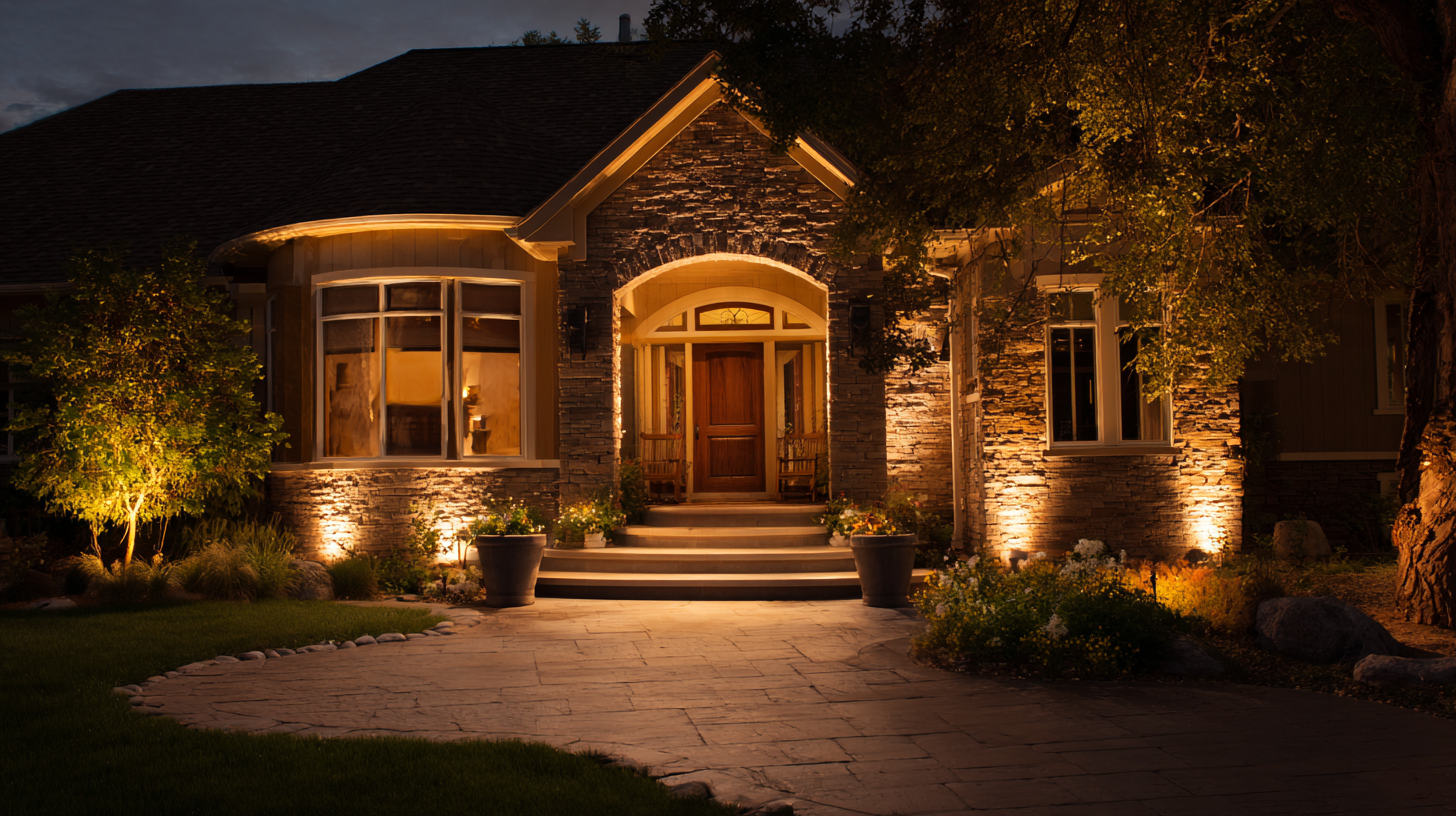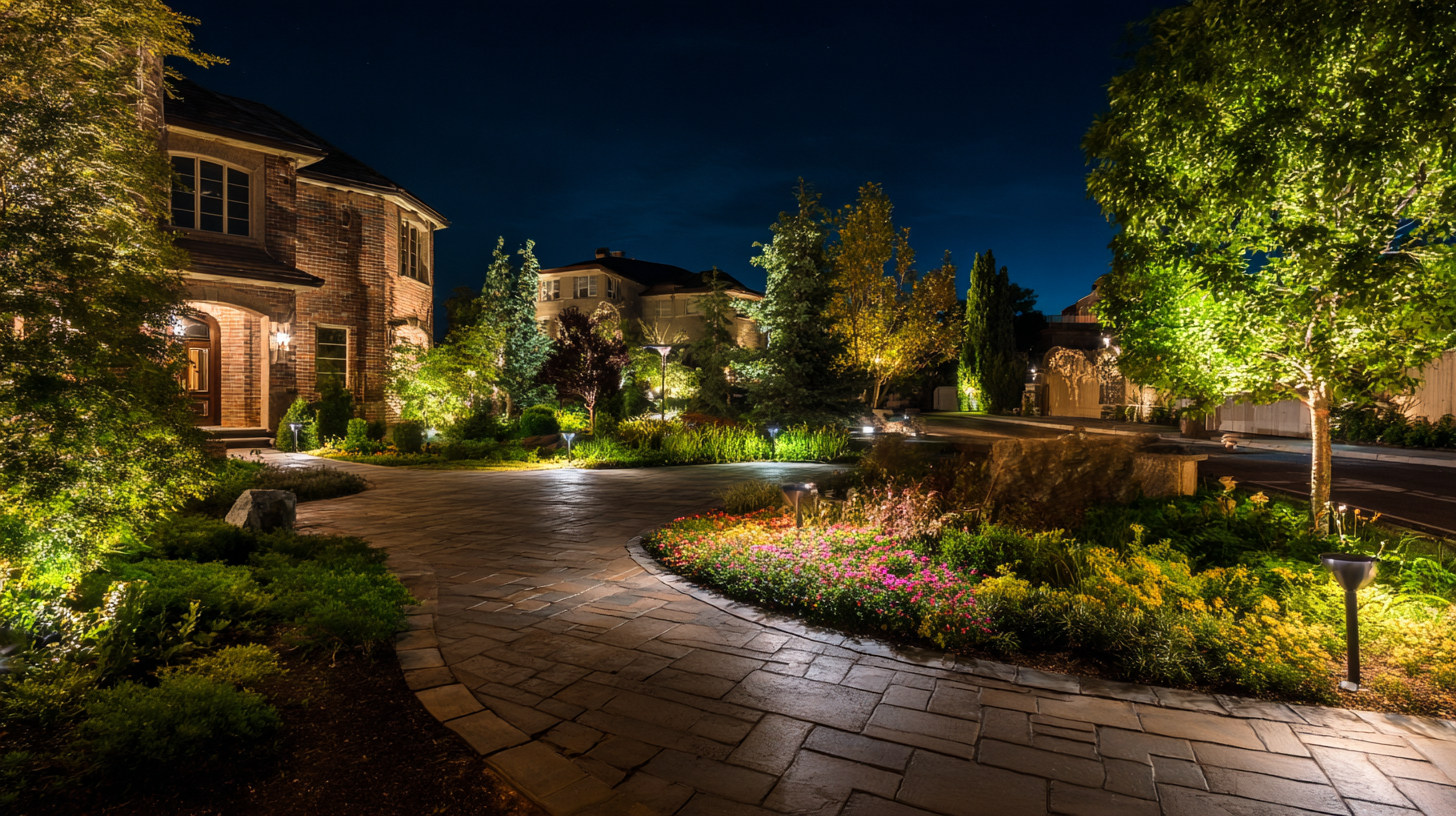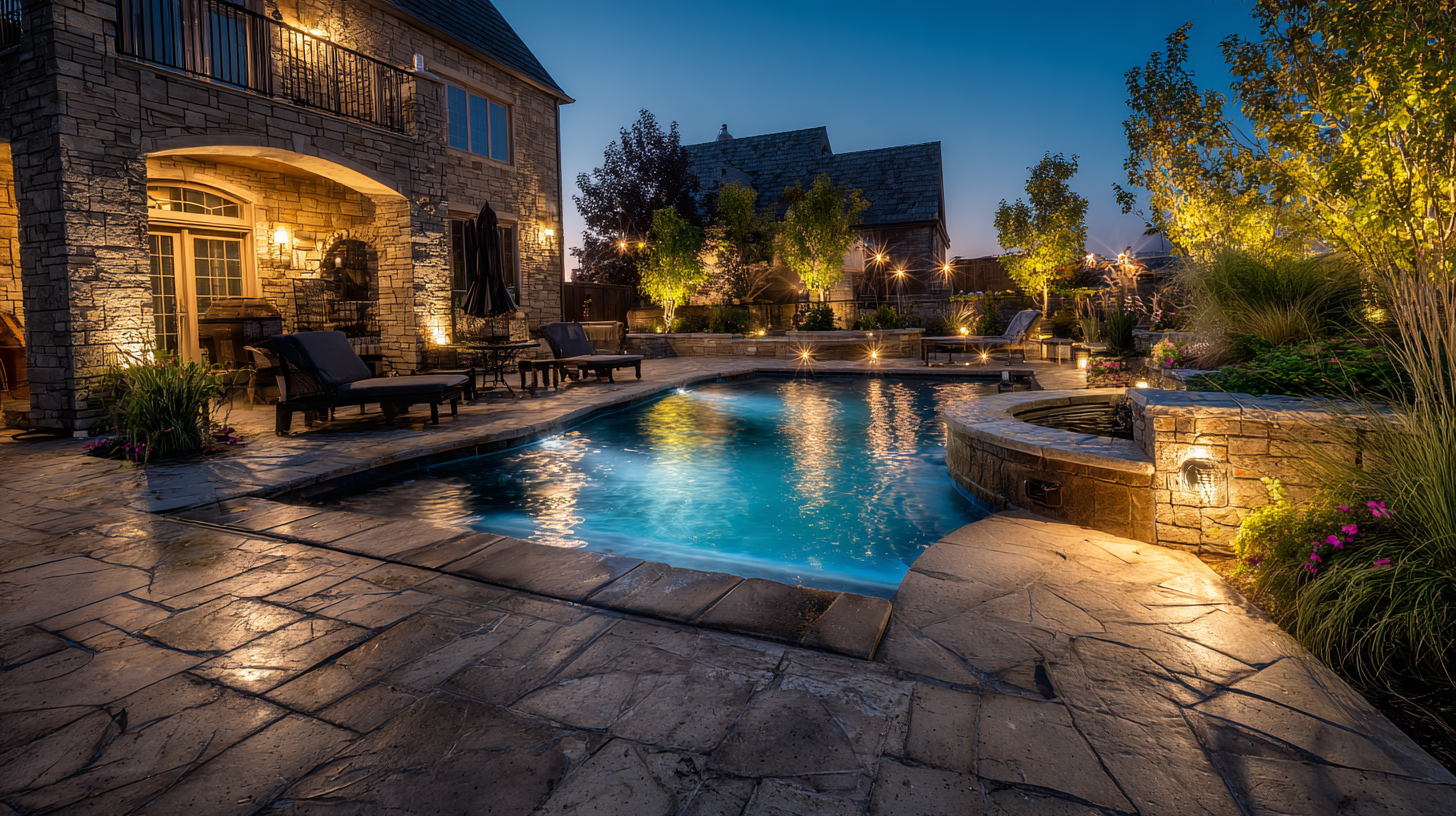Ultimate Guide to Low Voltage Outdoor Lighting Comparisons for Global Buyers
As the demand for energy-efficient and aesthetically pleasing outdoor illumination rises, "Low Voltage Outdoor Lighting" has become a focal point for homeowners and businesses alike. According to a report by Transparency Market Research, the global outdoor lighting market is expected to reach $25 billion by 2026, with low voltage systems playing a crucial role due to their versatility and reduced energy consumption. With applications ranging from residential landscaping to commercial venue lighting, low voltage systems can enhance safety and ambiance while minimizing environmental impact. This guide provides a comprehensive comparison of various low voltage outdoor lighting options, empowering global buyers with the insights necessary to make informed decisions. Dive into the world of low voltage solutions and discover the benefits that suit your specific lighting needs.

Understanding Low Voltage Outdoor Lighting: Key Benefits and Applications
Low voltage outdoor lighting has gained popularity among homeowners and landscapers alike, thanks to its blend of safety, efficiency, and aesthetic appeal. According to a report by the American Society of Landscape Architects, nearly 60% of residential projects now incorporate some form of low voltage lighting. This trend can be attributed to several key benefits, including reduced energy consumption and improved safety in outdoor areas. Low voltage systems operate on 12 volts, as opposed to standard 120 volts, significantly lowering the risk of electric shock and making them ideal for gardens, pathways, and patios.
Furthermore, low voltage outdoor lighting can enhance property value and security. Well-lit landscapes not only deter potential intruders but also create inviting spaces for evening gatherings. Industry data indicates that homes with strategically placed outdoor lighting can see a property value increase of up to 20%.
**Tip:** When selecting fixtures, opt for LED bulbs, which are more energy-efficient and have a longer lifespan compared to traditional halogen options. Additionally, consider using smart lighting controls to program and customize your outdoor lighting settings for maximum convenience and efficiency.
**Tip:** Be mindful of the color temperature of your lighting. Warmer temperatures (2700K-3000K) can create a cozy atmosphere, while cooler temperatures (4000K-5000K) are excellent for illuminating pathways and enhancing security around your property.
Key Benefits of Low Voltage Outdoor Lighting
Essential Features to Look for in High-Quality Low Voltage Lighting Products
When considering low voltage outdoor lighting, there are essential features that global buyers should prioritize to ensure they invest in high-quality products. According to a recent report by the American Lighting Association, about 30% of outdoor lighting installations fail due to inadequate quality and feature sets. Consequently, buyers should look for durable materials, such as corrosion-resistant metals and UV-protective plastics, which significantly extend the life of the fixtures. Research indicates that high-quality components can last up to 25 years, reducing the need for frequent replacements and maintaining aesthetic appeal.

Moreover, efficiency plays a critical role in low voltage lighting. The Department of Energy highlights that LED technology, when compared to traditional incandescent bulbs, can save consumers up to 75% in energy costs. Buyers should seek products that feature energy-efficient designs, such as those with low wattage and optimal lumen output. The ability to integrate smart controls is also becoming increasingly important; a study by the International Dark-Sky Association found that using smart lighting controls can reduce energy usage by an additional 30-50%, providing both environmental and economic benefits for consumers. By focusing on these key features, buyers can ensure their investments in low voltage lighting are sustainable, efficient, and long-lasting.
Comparative Analysis of Leading Low Voltage Lighting Brands Worldwide
When it comes to selecting low voltage outdoor lighting, a comparative analysis of leading brands reveals significant variances in performance, energy efficiency, and design. For instance, a report by Grand View Research estimates the global outdoor lighting market is projected to reach $25.3 billion by 2027, driven by the increasing need for energy-efficient solutions. Brands such as Kichler and Hinkley are often highlighted for their craftsmanship and durability, making them popular choices among global buyers seeking reliable lighting options.
Tips: When comparing different brands, pay close attention to the lumen output, as it directly correlates to brightness and efficiency. For example, products with a lumen output of 80-100 per watt are typically considered optimal for outdoor settings, ensuring enhanced visibility without excessive energy consumption.
Another crucial aspect to consider is the ease of installation and compatibility with existing systems. According to a study by MarketsandMarkets, nearly 40% of consumers prioritize user-friendly installation techniques. Brands like Moonrays and Hinkley often stand out for their plug-and-play models that simplify setup, enabling homeowners to enjoy their outdoor spaces with minimal hassle. Exploring these attributes allows buyers to make informed decisions tailored to their unique outdoor lighting needs.

Cost-Effectiveness of Low Voltage Lighting: Long-term Savings vs. Initial Investment
When considering low voltage outdoor lighting, understanding the cost-effectiveness is crucial. Many buyers initially focus on the upfront investment, but it’s essential to weigh this against the long-term savings that these systems can offer. Low voltage lighting tends to use less energy compared to traditional high voltage systems, which translates into lower monthly electricity bills. Additionally, the longer lifespan of LED bulbs means fewer replacements over time, further enhancing savings.
Tip: When calculating potential savings, consider conducting a cost analysis that includes installation, energy consumption, and maintenance over the expected lifespan of the lighting. This will provide a clearer picture of long-term affordability.
Moreover, low voltage systems can be more flexible in design and installation, often requiring less extensive wiring. This can reduce installation costs and allow for more creative outdoor lighting setups. The reduced energy consumption not only helps with cost savings but also benefits the environment, making it a choice that aligns with sustainable practices.
Tip: To maximize efficiency, opt for solar-powered low voltage options where feasible, as they further diminish operating costs while producing zero emissions.
Navigating Compliance: Industry Standards and Regulations for Outdoor Lighting
When it comes to outdoor lighting, compliance with industry standards and regulations is paramount for global buyers. These guidelines ensure not only the safety and efficiency of lighting installations but also their environmental impact. For instance, specific regions have energy efficiency requirements that dictate the types of lighting technologies available in the market, influencing the choices manufacturers make in their designs.
As outdoor lighting systems often face exposure to various weather conditions and environments, understanding and adhering to local regulations become crucial to guarantee durability and performance.
Navigating this regulatory landscape can be challenging. Buyers must stay informed about the latest compliance frameworks, which evolve continuously in response to technological advancements and environmental concerns. Just as industries like oil and gas and cybersecurity grapple with their own regulatory complexities, the outdoor lighting sector requires a commitment to adapting to legislative changes.
Furthermore, with initiatives aimed at reducing carbon footprints and promoting sustainability, manufacturers and buyers alike must engage proactively with these standards to ensure that their outdoor lighting solutions not only comply but also lead the way in innovation and environmental stewardship.